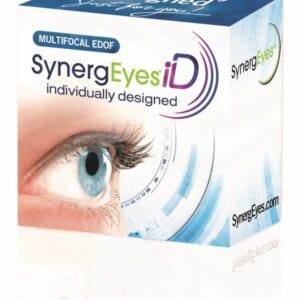January 18, 2024
In honor of the new year, we decided we would start off with some “resolutions” of our own in regard to contact lenses and our patient care. Here are the “Ins” and “Outs” for 2024! Thank you for continuing with us on this journey. Optometry is a learned profession, and 2023 has given us a lot to digest and use in practice. We look forward to what the new year has in store.
What’s In (Things We Want To Do For Our Patients/Staff):
1. Growing the base of patients wearing contact lenses. Most of our patients don’t know that contact lenses are even an option for them. Finding a way to give them a solution they weren’t aware of provides a level of care our patients may have never experienced.
2. Giving the “why” behind our selection of lenses. Patients have myriad options and may not know why we have chosen a lens to fit onto a patient’s eyes. This year, we’ll be stressing the lens we chose and the reasons why we selected it. Even if patients remain in their current lenses, it helps to reinforce the why by giving them another reason we are fans of their lenses. (It’s clear the lenses work, but we also share another tidbit about the science that went into the lens to flex our expertise.)
3. Getting (just) outside our comfort zone. It’s easy to continue doing things the way we have always been. However, our best care comes when we stretch ourselves. Each of us is committed to getting a little bit better at something that doesn’t come naturally.
4. Stating our case for daily disposables and upgrades. We don’t know what we don’t know. Patients are living their lives outside the 12-foot box of an exam lane. The pleasantries of case history can sometimes oversimplify the patient’s wearing habits (or lack thereof) or satisfaction (or lack thereof) of their lenses. By giving them an opportunity to experience something new and improved, they may enter a new appreciation for their lenses, their vision, and even us, their providers.
5. Deputizing the staff with all the information necessary (and then some). We want our staff to be able to differentiate between our lens options, wearing modalities, and all the talking points we have stored in our heads. Continue to invest in their learning, because when we have to educate, our knowledge base expands too.
6. Using the comprehensive examination to showcase our skills. We are usually our best PR department. Granted, we operate on a very inefficient scale of 1:1, but we get to do so in a large volume of interactions. My patients are getting two fun facts every year: 1) the eye is one of the only places in the body where we can see live blood vessels, and 2) from our comprehensive examination, we can detect over 270 systemic conditions. Patients have been blown away by these facts, but it’s up to us to educate them. We have the numbers to do so.
What’s Out (Things We Will Stop Doing or Try to Limit):
1. Not offering a full menu of treatment options. Patients are choosing us to be their expert, but the management path is a conversation not a directive. By offering our patients all their options, we can make the best informed decision that will lead to success and compliance.
2. Not asking one more question. The old adage is that curiosity killed the cat, but when we ask that next question, it opens more doors into what’s going on with the patient, with their lenses, or with their vision that may ultimately help us effectively solve problems and get them where they need to be.
3. Not taking the time to build relationships. Our profession is one that is rooted in relationships. Whether it’s as local as inside your office or as global as industry partners or the greater community, how we make and maintain those relationships can help advance our profession and our care. Our patients will always get better care when you know more about them and make recommendations based on that relationship. (See “An Aside on Chair Time” below.)
4. Not abandoning a lens option before exhausting all paths. In our troubleshooting article, we discussed that sometimes a very small tweak in the lens prescription can lead to a large improvement in patient satisfaction. Giving the appropriate amount of time and education in order to maximize our patients’ outcomes in their lens designs will not only help for that singular patient today, but it will also help guide us in future encounters.
5. Not keeping an open mind on new products. Industry partners have new materials, lens designs, and multifocals that come to market every year. We will be open to incorporating these into our practice by getting experience on multiple patients to get a better understanding of how new products can work for us. Sometimes when new products come out, we tend to use them on more challenging patients or when other designs have failed. Then we use that as our benchmarks. When we save them for the hardest of fits, it puts the lens at a disadvantage to showcase its features and benefits.
What habits are you emphasizing in 2024, and which ones are you letting go? We’d love to hear from you.
| An Aside on Chair Time We’ve always heard that “chair time” is a finite resource that is meant to be reduced. “How can we maximize chair time? We need to reduce chair time.” We toss these thoughts around all the time, but I’m here to challenge the way we think about chair time. It is time and an investment. We can either invest that time positively to help our patients, our practice, and our profession; or we can use that time to get through the exam as swiftly as possible. There are definitely negative investments in time: think about the fourth Rx check from the patient who has cataracts and “can’t see clearly in these new lenses.” However, each time we are educating from a place of prevention, protection, and premium products, we are using our time wisely even if it doesn’t yield immediately. |





